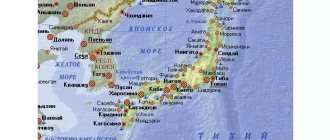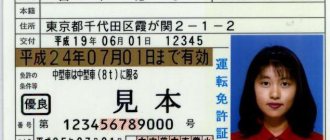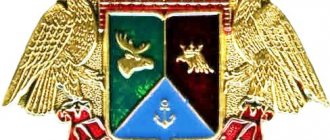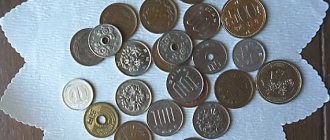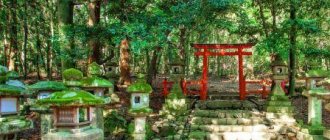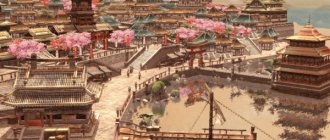Story
The term "kikumon" is made up of two words. “Kiku” means “chrysanthemum” in Japanese.
Mon is the Japanese equivalent of European coats of arms. These are round emblems with a symbolic design. The image could mean the social status of the owner or his belonging to a noble family. Early uses of mon date back to the 8th century. Armorial images were included in the ornament of expensive fabrics and were cut out on the personal seals of the owners.
Kikumon has been a symbol of the Japanese imperial family since the 12th century. The first bearer of the emblem is Emperor Gotoba. The ruler loved chrysanthemums and turned a stylized image of the flower into a personal sign and seal. Gotoba's followers on the throne continued the tradition, and the symbol of this flower was assigned to the ruling dynasty.
In 1869, the imperial status of kikunogomon was officially approved.
During the Meiji period - the "opening" of Japan to the Western world (from the early 1870s) - the right to use the emblem was strictly limited. The 32-petal chrysanthemum belonged exclusively to the emperor.
In 1926, Kikumon first appeared on the covers of Japanese passports.
During World War II, the golden chrysanthemum was a distinctive sign of Japanese ships.
Today, a stylized image of the flower is printed on government papers and personal documents of the Japanese, and minted on coins. The law does not specify the stamp status of the flower.
Japan flag
It is worth studying not only the coat of arms, but also another emblem. Moreover, its history has been going on for more than a thousand years. According to the rules that Japan previously followed, the coat of arms and flag are symbols of the emperor, and for a long time only he could demonstrate them. The beginning of the public use of official symbols was associated with the country’s entry into the world community. It was necessary to comply with the new orders. Before this, the state was isolated. In 1870, after realizing the need for contacts with other countries, a decree was issued according to which a flag called “Hinomaru”, that very familiar white cloth with a red circle symbolizing the sun, was to be present on every ship. After World War II, society was dissatisfied with this symbol for some time - the associations with a militaristic country turned out to be too strong. But the processes of economic and social development turned out to be so rapid that the issues themselves soon faded away. In 1999, Hinomaru was officially recognized and a day dedicated to the flag was approved by law - August 13.
The following legend is associated with the emergence of the cloth. Emperor Jimmu won a difficult battle because he had the sun behind him. Since then, fans with a red symbol of the luminary began to be used for good luck, placed on the battlefield behind the army. The belief in the protective function of this sign also determined the modern choice. Perhaps that is why, even in difficult times, they did not officially abandon the cloth and create a new version of the state flag.
Options
- Kikumon with 32 petals is the traditional full version of the emblem. The chrysanthemum is depicted in this form on the imperial seal. Since the 2nd layer of petals is hidden behind the first, the national symbol of Japan is sometimes described as a 16-petalled chrysanthemum.
- The 16-petal emblem is a simplified version of the design. Single-layer chrysanthemum can be seen on the covers of personal passports and documents of the Japanese parliament.
- Personal insignia of Emperor Akihito as a Knight of the Order of the Garter. Great Britain's highest award was presented to the Japanese ruler in 1998. On Akihito's knightly emblem, the chrysanthemum is combined with elements of European heraldry. The flower is placed on a red shield, surrounded by a blue ribbon with the motto of the Order of the Garter - “Let him who thinks ill of it be ashamed.” The crest of the coat of arms is also made in the shape of an imperial chrysanthemum with 32 petals.
Symbolism in modern life
After World War II, the coat of arms of Japan was allowed to be used not only by representatives of the imperial family. The Order of the Chrysanthemum became the main state award. Now you can see the coat of arms of Japan everywhere in the country: photographs, drawings, images of it - on all institutions. Embassies and consulates abroad are also marked with such symbols. In addition, the sixteen-petalled chrysanthemum is depicted on the cover of every Japanese passport.
Main Attraction: Mount Fuji
In addition to the living attributes of Japan, various natural objects are also revered in the country. Mount Fuji is an extinct volcano on the island of Honshu. In 663, the first ascent of the beautiful mountain was recorded, about which poems, odes and legends are composed. It was performed by simple monks. For a long period, women were forbidden to even approach the sacred mountain.
Mount Fuji in Japan
On the slopes of this volcano there is a Shinto shrine. And climbing this mountain is equivalent to gaining immortality. But what makes this mountain so unique?
It's all about its incredible symmetry. And also in the blooming cherry blossom gardens on its slopes. The legend about this mountain says that it was formed, as if by magic, in just one night. Its views are truly amazing and magnificent. And the atmosphere there seems authentic and pristine.
Background
The flag of Japan, officially called 日章旗 nisshoki or Hinomari 日の丸, represents the Land of the Rising Sun and means “sun disk.” On a white rectangular panel there is a scarlet disk, shifted slightly towards the shaft. A similar symbol has been known in its current form since the beginning of the 7th century. Noble samurai depicted him on their fans.
In the 13th century, Japan was attacked by Mongol hordes. The first mention of the current flag of Japan dates back to this period. According to legend, it was presented to the shogun by the Buddhist monk Nichiren. This is described in the 12th century story “About the House of Taira”.
The oldest hinomaru is now exhibited in the Umpo-Ji fortress (Yamanashi Prefecture). It is already more than 1000 years old. This flag is associated with the Takeda clan. Researchers have confirmed that the panel is older than the 16th century.
No less ancient is the hymn - Kimi ga yo. Its text is written in the traditional Japanese waka style dating back to the Heian era. The quintet, in this manner the official anthem was created, praises the Emperor. This is the oldest official country song text on the planet. The music for it was written much later. The unknown author did not leave his own notes to the heirs. In ancient times, the five-line verse was popular among people; everyone sang it in their own way. The coat of arms of Japan is the Imperial Seal in the form of a sixteen-petalled chrysanthemum.
Delicious national symbol: Japanese cuisine
The cuisine in Japan has many peculiarities. In every province of this amazing country you can find something unusual. But world-famous Japanese dishes have become true unofficial symbols of this state.
Sushi or “sushi” in Japanese came to this country from South Asia. They were originally made from seafood, but in the 18th century they began to be made with the addition of rice.
This dish requires strict adherence to cooking technology. Authentic Japanese sushi is prepared only from fresh ingredients according to ancient recipes. Their various variations are modern culinary trends that are not related to Japanese dishes.
Unagi can also be considered a traditional Japanese dish. Fried eel, seasoned with sauce, is served in traditional restaurants and is considered a real delicacy.
Another original Japanese dish is Soba. Buckwheat noodles, served with broth and soy sauce, are an everyday dish. This recipe originated in the mountainous regions of Japan, and today is popular throughout the state.
Buckwheat noodles "Soba"
Yakitori is a variation of chicken kebab. Chicken giblets and meat are fried only on charcoal and consumed with tare sauce. After the opening of borders in Japan, new recipes appeared that can be classified as a mixture of European and Asian cuisines, but yakitori, soba, unagi and sushi are considered the national dishes of Japan.
Heraldry and symbolism of samurai and their meaning
Canadian flag - history and meaning of colors. what does the canadian flag mean
Heraldry and symbolism in Japan played a very important role, just as in European countries during the Middle Ages. That is, an emblem or symbol helped to identify which clan the samurai belonged to and which master he served.
Samurai symbols (mons) were an important element in life, and especially during battle. If medieval European knights placed their coats of arms and symbols on their shields, the samurai, unlike them, wore them on their armor or clothing.
These samurai symbols also helped to identify a warrior if he died on the battlefield. The victorious samurai or soldier could cut off the head of the fallen man, and, together with the uma-jirusi (sign, symbol), bring proof of victory to his master.
Uma-jirushi or "horse insignia" are the standards of various generals. They were in the hands of the rider and attached to a long pole. These insignia were used by the commander to command the army during the battle. Japanese insignia was simpler in comparison with European ones and therefore more understandable. Due to this, it was possible to quickly issue commands to the soldiers.
The most unlucky
Along with the luckiest signs, the Japanese also identify outsiders who are considered the unluckiest zodiac signs:
- Virgo. He often fails due to his excessive criticality and pickiness over trifles. The habit of delaying decision-making only hinders Virgos, forcing them to mark time and not follow their dreams.
- Capricorn.
People born under this sign like to dwell on their problems and failures. These are tough and practical people influenced by Saturn. They go to the top of success the most difficult way, overcoming numerous obstacles, and at the same time do not even try to look for workarounds. They perceive any changes with great suspicion and are very conservative. Because of this, success in their life comes only when they reach the very top. - Cancer. A closed and cowardly sign, always hiding in its shell. Always chooses something that will not bring much success. Having every opportunity to make a successful career, he will occupy the lowest positions because of his doubts. He prefers to avoid even the slightest risks and rarely listens to his inner voice. Therefore, luck rarely comes along the way of this sign.
The unluckiness of zodiac signs in Japan directly depends on the influence of weak planets on them.
The Japanese borrowed a horoscope from the culture of other peoples, but made it completely different from the traditional one to which people from the West are accustomed. Much in the Japanese zodiac circle is determined by the five elements, as well as the ratio of masculine and feminine principles in each sign. Japan also has its own luck rating, according to which all signs are divided, under the influence of planets, into lucky ones and into those who rarely achieve great success in life.





